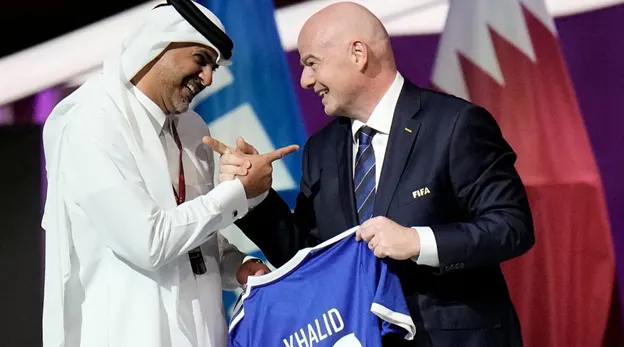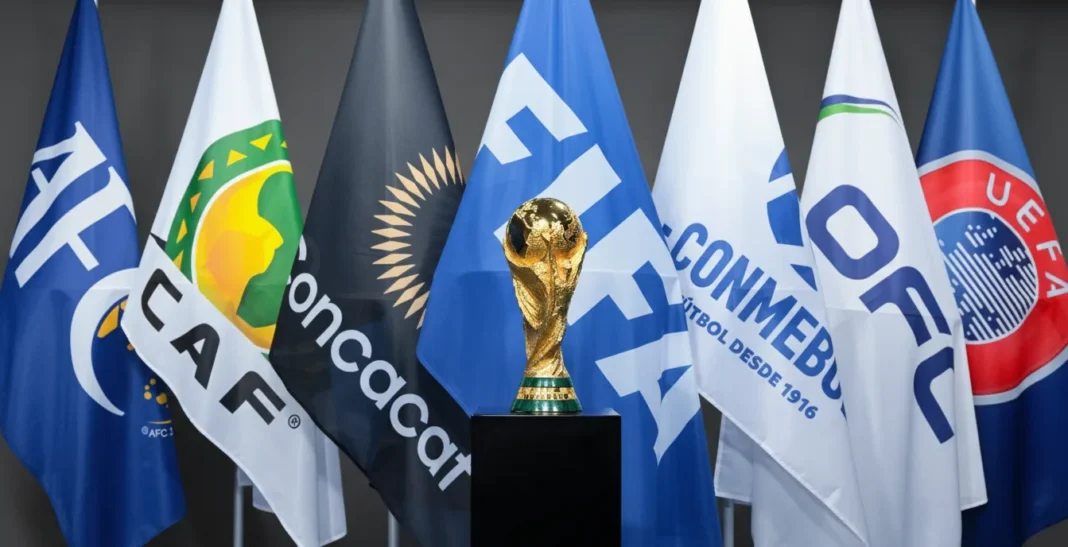The 2034 FIFA World Cup is set to take place in Saudi Arabia, and interesting developments have taken place regarding it. One such development is The World Cup taking place in January of 2035, according to reports from The Athletic. The likely reason for these developments is because of hosting it in the usual June-July window is nearly impossible because of the intense Saudi Summer heat, which will make it difficult for the players to play in such conditions. The alternate proposal for hosting it in the November-December window previously used for the 2022 FIFA World Cup is likely to be rejected by the hosts because it is likely that it would overlap with the holy month of Ramadan, as they want to ensure the well-being and health of the Muslim Players who will keep fasts during that month.
🚨 The 2034 World Cup could now take place at the start of 2035. 🇸🇦
The tournament is expected to take place in winter for the same reasons as the 2022 World Cup in Qatar, however, it’s not expected to take place in November or December 2034 due to Ramadan. 🌙
(Source:… pic.twitter.com/6z58a81Igi
— Transfer News Live (@DeadlineDayLive) October 9, 2025
Now, by saying that, let’s dive into the potential impacts, positives, and negatives of holding the World Cup in January.
The Player Paradox: Peak Performance vs Inevitable Burnout

For players and coaches, a January tournament can act as a double-edged sword
- The Positive: The most compelling part of the tournament taking place in January is that most players would arrive mid-season, at or nearing their peak physical condition and sharpness, instead of at the end of a 10-month-long 25/26 Club Campaign, where most of the players would’ve been fatigued. This might result in more dynamic and energetic displays by teams and might result in fewer injuries due to exhaustion, “Mid-Tournament”. Also, playing in the mild Saudi winters will ensure optimal conditions for the players to perform and ensure their safety and well-being.
- The Negative: The aftermath of a winter World Cup might be severe, as the “hangover” from the tournament settles, the club campaign will resume almost immediately. Leagues and Competitions will find it difficult to accommodate their calendars according to the tournament, as a major overhaul in planning will be needed to reschedule the leagues, cups, and continental matches, due to which congestion in fixtures is most likely to occur. Besides, the players returning to their clubs would face the heat of the likely compressed schedule, which will eventually result in burnout and a drastic increase in the risks of season-ending injuries to players.
Mid-Season Disruption: Fracture in the Club Football Calendar

For domestic leagues, cup competitions, and continental tournaments, particularly in Europe, a Winter World Cup will not just be a mere interruption; this would be a logistical and commercial nightmare.
- One of the major hindrances caused by the World Cup in Winter would be that it would break the Club Football Calendar into two “Mini-Seasons”, which would completely disrupt the existing structure of football. There would be a requirement for a major overhaul and rescheduling to accommodate the World Cup. This ”Pause” in the calendar will break the momentum of clubs and players who would most likely play almost half a season by then, and will cause problems for the clubs to manage their players, including both sets of players who would go to the tournament and who would not go, as they have to monitor player fitness, routine, and ensure proper training to maintain fitness and sharpness of players. The broadcasters and sponsors will also have consequences to face as the long break would mean a decrease in their revenue over the period, which would be a major concern. Overall, there would be an immense impact awaiting the clubs, players, and brands.
A New World of Viewing: The Dilemmas and Opportunities for Fans

Among all this, there awaits a vast difference in experience for the fans travelling and those watching from home.
- Positive: A winter tournament has to offer a unique, festive atmosphere, which will break the current monotonous sporting calendar, although they have its own negatives, but for fans, this will break the monotony of the ongoing club football and bring a new flavour of competitive international games in between, and what could be better than a World Cup for it. For Saudi Arabia, this brings a new avenue of tourism and present a new image of them in front of the world, breaking the stereotypes that have been set for them in the World.
- Negative: For travelling fans, the biggest negative would be the logistical challenges faced by them as this window will fall outside the typical summer holiday period, making it more difficult for them to take leave and travel during the World Cup, during peak demands of accommodations and other facilities, due to deman,d it can be expected that stay will be much more expensive at that time. Also, the traditional “summer of football” vibe, which is characterised by outdoor fan zones and public viewings in the northern hemisphere, would be replaced by a winter viewing experience, potentially altering the communal feel of the event.
The Transfer Window Dilemma

- As the World Cup collides with the Winter Transfer window, it would be interesting the observe what pans out for the clubs and players as it is most likely that clubs won’t be able to make a lot of reinforcements if the traditional window is followed. As the World Cup goes on, players would like to shut all these external noises about transfer rumours and other things going as this is an opportunity of a lifetime for them, so we can expect a rather silent Transfer Window if the traditional window is followed.
The Bigger Picture: A Paradigm Shift for Global Football

A January 2035 World Cup would further solidify the slow paradigm shift we are experiencing in the footballing world, whose foundation has been laid from the 2022 FIFA World Cup in Qatar. This would further confirm that FIFA’s flagship event is no longer bound by the traditional June-July window, which eventually open the doors for the countries with a more tropical climate, as sometimes nations like these, used to miss out on the opportunity to host the biggest sporting event in the world. But, this would also mean a direct face-off with the European-centric club calendar, as they follow a 10-month-long August to May window, which will have a direct clash during January period, further intensifying the ongoing tussle between FIFA and the clubs over player availability and international football structure.


